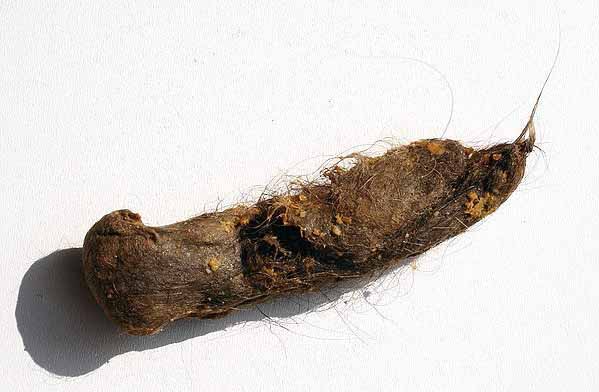Why is my cat coughing?
There are lots of reasons your cat might be coughing. Sometimes it might be furball or other times it might be a sign of an underlying condition.




If this is what your cat is bringing up – it is only a fur ball and there’s nothing to worry about. Most cats, especially longhaired ones, will regularly vomit fur balls.
To reduce the number of furballs your cat is bringing up, try grooming your cat regularly. The more fur you remove from your cat, the less fur that will end up as hairballs in their stomach. Also ensure that your cat is not over grooming due to their flea control not being up to date.




Watch Tiger’s posture. He sits upright and looks uncomfortable, often accompanied by loud wailing. Shortly afterwards he starts with violent stomach contractions which get more exaggerated before he finally produces some liquid and a fur ball plus any residual food.
Watch Tiger’s posture. He crouches very low to the ground and extends his head and neck to straighten his airway. This is proceeded by several dry coughs/wheezes, often with a swallow at the end to get rid of any mucus. It may take several minutes for him to get back to normal.
If this looks like your cat then continue down to find out what to do next…
The first thing is don’t panic…
Asthma in cats is very common with an estimated 2% of the cat population affected. Some breeds such as the Siamese or Himalayan are predisposed to developing feline asthma but almost any cat can be affected.
Asthma usually starts with quite mild symptoms such as an odd wheeze or cough. However untreated it will rapidly develop and potentially become life threatening.
Cats with allergic airway disease (asthma) produce a very thick mucus which is hard for them to get rid of and over time will plug airways worsening the disease. Because of this early diagnosis and intervention is key so if you think your cat may have asthma make an appointment to see your Veterinary Surgeon now.

So how do we treat feline asthma?
Just as with humans the main stay of asthma treatment is anti-inflammatory gluco-corticoids (steroids). Traditionally these used to be given by tablet or injection but the high doses needed to treat the asthma cause side-effects elsewhere in the body such as diabetes or pancreatitis.
More recently we have been treating cats with inhaled steroids which get right to the root of the problem but without any of the side effects.
If it were you or I we would place a MDI (metered dose inhaler or puffer) between our lips and depress the button whilst taking a deep breath. Unfortunately our cats are not so co-operative! To get around this problem a purpose built spacing chamber was specifically designed for cats – the AeroKat feline aerosol chamber. This easy to use, high efficiency chamber holds the medication suspended until the cat is ready to take a breath. What’s more a special ‘Flow-Vu‘ indicator shows you when the patient is taking effective breaths. The AeroKat really has revolutionised how we treat feline asthma and is responsible for enhancing the lives of thousands of cats worldwide.
Please click below to purchase an AeroKat securely on-line backed by a no-quibble two week money back guarantee.
Keep up regular medication as prescribed by your vet even if you think your cat is better.
Cats are often allergic to human dander and so excluding them from areas with high levels like the bedroom may lessen symptoms.
Avoid using aerosols or other environmental sprays near your cat.